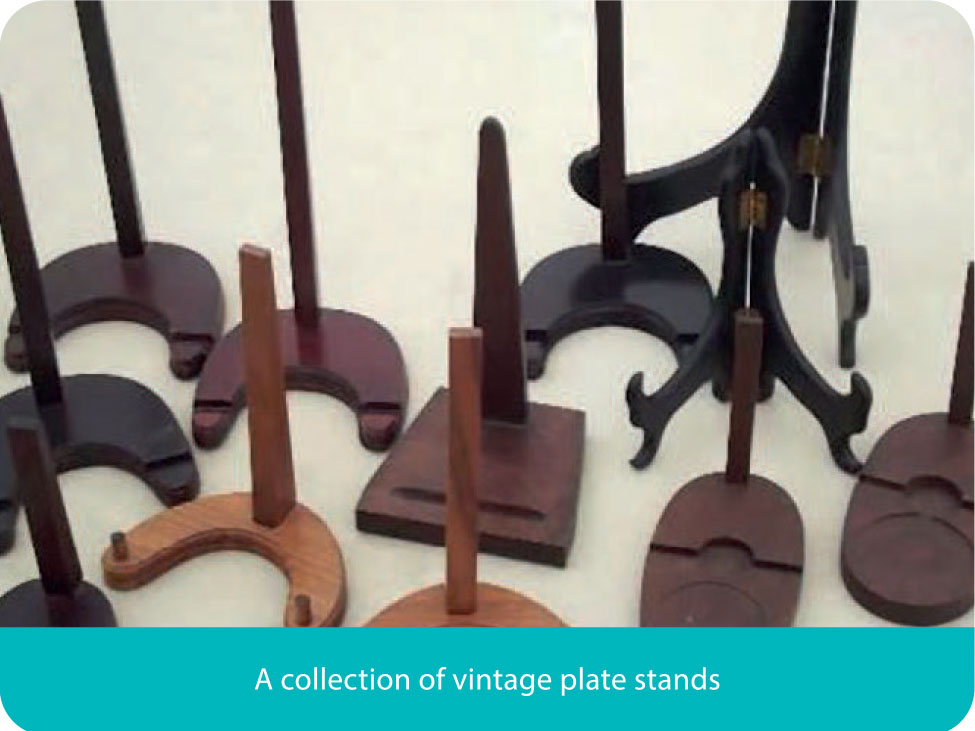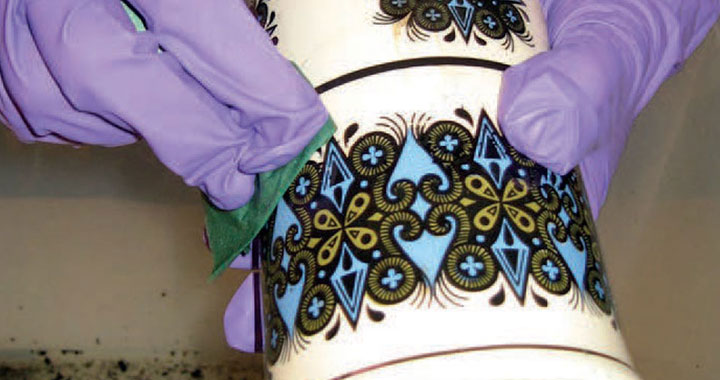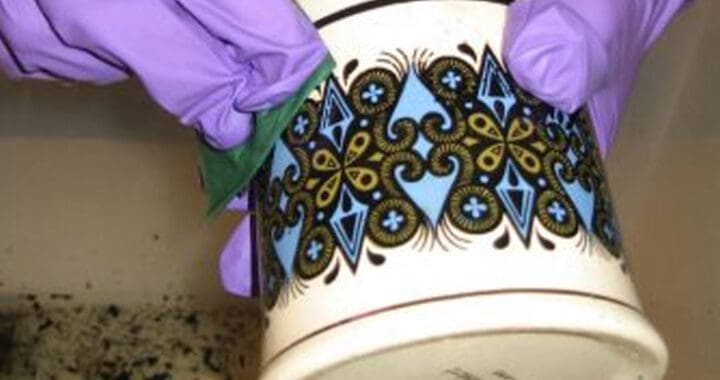Mark Longley gives his best advice for caring for ceramics:
Tips on Handling and Examination
- Ideally, ceramics should be handled as little as possible and with great care, never picking pieces up by handles or rims, and being aware of loose parts like lids. Wear thin nitrile gloves when handling unglazed wares or, especially if the glaze is flaking. If you are carrying items be sure to use both hands to cradle objects. Always handle pieces over a soft cloth or towel.
- Ideally one should have a knowledge of those pieces that are restored or damaged. Examine pieces for losses to the rims, applied decoration, or projecting parts of a piece. Hairline cracks and firing faults are usually noticeable. If you are unsure, always contact a professional fine art surveyor.
- Restoration may involve an element of over-painting and damage. This paint will be softer than the hard glaze and can be felt with a soft application of a coin or metal point. Some people might use their teeth on a clean area of repair as this method, while not professionally used or advisable due to increased sensitivity. Older repairs are often apparent because old paint yellows with age. Examine pieces under a strong light for repairs. Use a UV light or a UV torch in a dark room for a more thorough examination of potential restoration. Repairs and natural faults both shine with a strong white light.

Tips on Display and Storage
- Never crowd shelves or display cabinets, and place smaller items at the front. Using a display cabinet will reduce the risk of dust and grime attaching itself to your collection and will be protective.
- Resist the temptation to stack too many plates in a pile. The resulting weight can easily lead to accidents. Use plate stands or specially designed stands for display.
- Take care when hanging plates, that you use the correct size devices otherwise you may put a considerable strain on the plate. Do not hang plates with hairline cracks.
- Remove old style plate hangers that have springs to tension the attachment hooks. Replace those with wire hangers. Investigate adhesive hanging devices but be aware that this adhesive might affect certain surfaces.
- Store ceramics by wrapping in acid-free tissue paper and bubble wrap and packing into a strong plastic crate.

Tips on Cleaning
- Occasionally it may be desirable to wash objects, but usually a careful dust with a soft duster or hogs hair brush should be enough.
- Washing may be best done by using swabs of cotton wool or cotton buds, rather than immersing the object in water. A soft toothbrush could be of assistance. Avoid extremely hot water. The addition of a little detergent may help. Never attempt to use bleach to remove stains.
- Not all ceramics have a hard glaze. Great care needs to be taken with certain kinds of ceramics where these are porous or made of soft-paste, Parian, or biscuit ware, and never immerse anything which has gold decoration which may be unstable. Some decoration may be applied by a transfer technique, commonly found in antique dinner services, so be aware of rubbing surfaces whilst cleaning or handling.
- Keep broken or damaged ceramics carefully until you can get the piece to a professional restorer.

To find out more about our ceramics valuation service, contact us here!

















